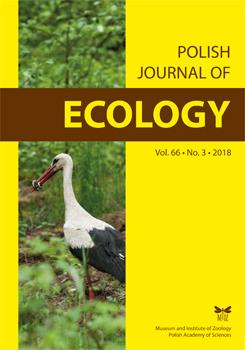Although freshwater habitats play a crucial role in most ecosystems in the world, little is known on their functioning in tropical regions even in regard to the most often studied avian communities. In this study, counts on waterbirds were conducted in dry and wet season (in years 2001–2008) in a riverine habitat in southern Africa (Shamvura stretch of the Okavango River). In total, 84 waterfowl species were recorded. The birds were assigned to different guilds according to their migration activity, diet and nesting site selection. In overall, the species number was almost the same (74
How to translate text using browser tools
1 September 2018
Seasonal Changes in the Diversity and Numbers of Waterbirds in a Tropical River in Southern Africa
Grzegorz Kopij,
Mark Paxton
ACCESS THE FULL ARTICLE

Polish Journal of Ecology
Vol. 66 • No. 3
September 2018
Vol. 66 • No. 3
September 2018
ecological guilds
Namibia
Okavango
population trends
waterbirds
Wetlands




